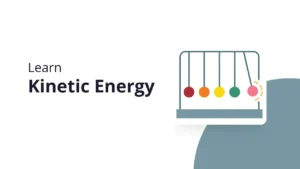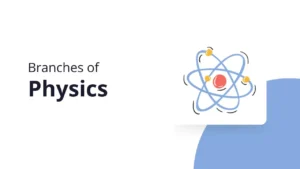The equation which links acceleration, initial and final velocity, and time is the first of the equations of motion.
These equations are used to describe motion in a straight line with uniform acceleration. You must to be able to:
- select the correct formula
- identify the symbols and units used
- carry out calculations to solve problems of real life motion
Related Posts:
Proof of 1st equation
Consider a body initial moving with velocity “u”. After certain interval of time “t”, its velocity becomes “v”. Now Change in velocity = v – u
And by the definition of acceleration, rate of change of velocity is called acceleration.
Acceleration = rate of change of velocity
a=v-u/t
- a = acceleration in metres per second per second (m s–2)
- v = final velocity in metres per second (m s–1)
- u = initial velocity in metres per second (m s–1)
- t = time in seconds (s)
v = u + at Equation of motion 1
Proof of 2nd equation
Consider a car moving on a straight road with an initial velocity equal to ‘u’. After an interval of time‘t’ its velocity becomes ‘v’. Now first we will determine the average velocity of body.
Average velocity = (Initial velocity + final velocity)/2
OR
Vav = (u + v)/2
but v = u + at
Putting the value of v
Vav = (u + u + at)/2
Vav = (2u + at)/2
Vav = 2u/2 + at/2
Vav = u + at/2
Vav = u + 1/2at…
we know that
S = Vav x t
Putting the value of ‘Vav’
S = [u + 1/2at] t
We get
s = ut + ½at2
S = ut + 1/2at2
- s = displacement in metres (m)
- u = initial velocity in metres per second (m s–1)
- t = time in seconds (s)
- a = acceleration in metres per second per second (m s–2)
s = ut + ½at2 Equation of motion 2
Proof of 3rd equation
Equation 1 v = u + at
squaring each side of eq (1) to give
v2 = (u + at)2
v2 = u2 + 2uat + a2t2
v2 = u2 + 2a(ut + ½at2)
As ut + ½at2 = S
substitute in Equation 2 v2 = u2 + 2as
v2 = u2 + 2as Equation of motion 3



